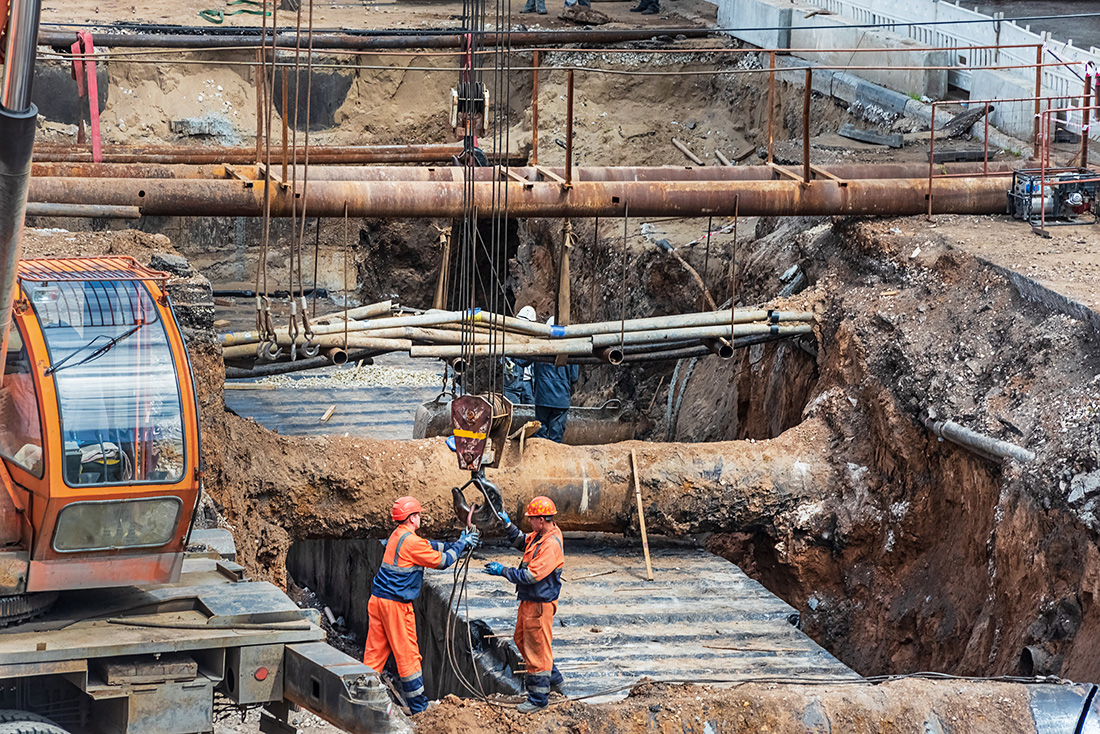March 2024 Vol. 79 No. 3
Features
Western sanctions impacting Russian underground infrastructure
By Eugene Gerden, Contributing Writer
(UI) — The Russian sector of underground infrastructure construction is potentially in a serious crisis. The ever deepening shortage of funding and the lack of technologies are posing a threat for implementation of many investment projects and planned modernization of existing infrastructure.

Prior to Feb. 24, 2022, the general level of development of underground infrastructure in Russia was generally comparable to average investment in the majority of other emerging states. The government spent enough funds for ensuring at least stable operations for most of these facilities, avoiding massive black outs and serious utility accidents. While the rate of renewal of local power transmission, water and other infrastructure was at a generally low level, not exceeding 1-2 percent annually, its technical condition was at generally acceptable levels.
The beginning of Ukranian-Russian war brought massive sanctions upon Russia and have put an end to hopes for the development of the industry at least with the same dynamics and growth rates as in the past.
Though the Russian state still has some reserves for maintaining the existing underground infrastructure in reasonably good condition in the near term, most local analysts warn the current situation may significantly deteriorate by next year as the level of pressure continues to grow.
Power generation
According to official data of the Russian Ministry of Energy, today there are about 1,300 territorial electricity transmitters (TETs), operating in Russia and 40 percent of them do not meet reliability requirements.
Many TET’s have worn-out electrical networks, no emergency supplies and repairs are not carried out to the required extent. There are also no modernization programs that could correct the existing situation. Prior to February 2022, there were plans by the Russian government to begin massive modernization of the existing electricity infrastructure, but most of these ventures have been abandoned due to the current funding crisis.
This year the rate of construction and modernization of new power transmission lines in Moscow, Russia’s richest region, declined by at least 30 percent, and significantly higher in other regions of the country. According to data provided by the Moscow city government, in the first half of 2023, only 76.4 miles of power transmission lines and 85.4 million volt-amperes of additional transformer capacity were commissioned in the Moscow region – only a third of the planned annual volume.
It is also unclear what going to happen the construction of the world's largest superconducting power line in St. Petersburg by Rosseti, Russia’s largest transmission grid company.
The new line has the length of roughly 1.6 miles, and, according to Rosseti, will have no analogues in the world. It will connect the substations of the Moskovsky and Frunzensky districts of St. Petersburg and will allow the transmission of up to 50 mega watts at an average voltage of 20 kV. To date, most of the cable has been laid while the official launch of the line is expected soon.
Rosseti has high big hopes for this project. The primary feature of the line is its superconductor, whose resistance tends to zero when frozen below 77 degrees K. For cooling, a double-circuit cryogenic supply system with a length of 3.1 miles was created.
According to Andrey Ryumin, CEO of Rosseti, high-temperature superconductivity is a flagship technology in the energy sector. It ensures the transmission of high power with almost complete absence of losses, and also allows the construction of compact and highly efficient facilities, which is especially important in megacities.
Water
In addition to electric transmission sector, the ever tightening sanctions are creating serious problems for the Russian water infrastructure.
The existing state strategy “For development of construction industry and housing and communal services of the Russian Federation for the period until 2030”, acknowledges the current complex situation in the Russian water infrastructure remains complex, which is mainly due to its high level of wear and tear.
According to official data of the Strategy, currently more than 40 percent of the water networks (155,000 miles) throughout the country are seriously outdated and need to be replaced. In case of sewerage networks, this figure is even higher, estimated at 46 percent (75,000 miles).
As building of new water infrastructure is usually associated with huge costs, most of analysts do not expect massive building in Russia along with its modernization next year. This is also due to the recently approved Russia’s state budget for 2024, where 40 percent of budget expenditures will be sent for the needs of military and primarily the Ukranian-Russian military conflict and ramping up weapons production.
Energy pipelines
There is a possibility that part of the needed funds could be allocated from some recently suspended major projects, which involve building of new gas and oil pipelines, which are aimed at exporting of Russian hydrocarbons, primarily to the Asian region. One of them is the Power of Siberia 2, a proposed natural gas pipeline to export natural gas from Russia's Western Siberia Altai region to North-Eastern China.
The design of the Power of Siberia-2 gas pipeline began in 2020. The proposed 4,160-mile pipeline would run from Russia through Mongolia to China. Pipeline capacity is up to 50 bcm of gas per year. In general, Russia plans to use Mongolia as a transit country for the supplies of its hydrocarbons to Asian region, while in addition to Power of Siberia-2, this country will be used as a transit destinations for other projects.
Prior to 2022, the Russian government, together with the natural gas monopoly Gazprom, had serious plans to construct up to 15,000 miles of gas pipelines within the country by 2025. Now, implementation of these plans has been delayed due to the sharp decline of Gazprom’s revenue in 2023, again largely due to the war with Ukraine.




Comments